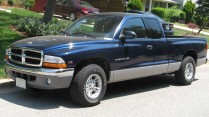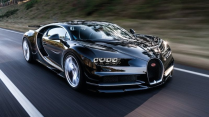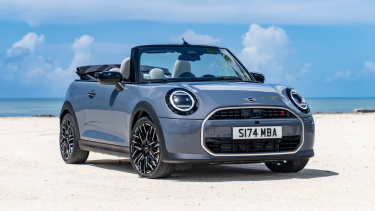Bugatti Bolide Showcases Massive Carbon-Carbon Brakes for Unparalleled Performance
By Dabbie Davis
Feb 25, 2024 07:29 PM EST

The ultimate in performance and luxury for cars is the Bugatti. Ever since its beginning in 1909, Bugatti has created a legendary history by consistently setting new standards for superior engineering, elegant design, and unparalleled speed. Bugatti, which has already created the renowned Veyron and the revolutionary Chiron, continues to push the boundaries of automotive perfection and enthrall both enthusiasts and connoisseurs with the unveiling of each new masterpiece.
Bugatti Presents Latest Upgrade: Massive Carbon-Carbon Brakes
As per Motor1.com's report,Bugatti included 21 images with its recent announcement about testing the bonkers track-only Bolide at Imola. They all look stunning, but the image above tells everyone all they need to know.
Bolide is incredibly fast, and it requires a significant amount of braking force to bring it under control given its massive 1,826 horsepower. With delivery of the Bolide track car scheduled for later this year, Bugatti is currently nearing completion of its development.
Working with Brembo, Bugatti claims that the brakes on the Bolide are up to F1 and LMDh standards. The stopping power of the Brembo brake system is truly remarkable, featuring a "carbon-carbon" setup with eight-piston mono-block calipers in the front and six-piston units at the back, all crafted from nickel-coated aluminum.
All four clampers tightly grip 15.3-inch carbon discs, with slightly thicker pads and rotors on the front end, totaling the largest carbon brake system ever created by Brembo.In an effort to test the Bolide in all weather conditions, Bugatti recently transported the vehicle to Imola, also known as the Autodromo Internazionale Enzo e Dino Ferrari, for wet weather testing.
READ MORE: Mercedes-Benz Unveils Cutting-Edge Technology with Mythos Series Set for 2025 Debut
The Bolide has an awe-inspiring marvel since its debut in 2020.
It has captivated audiences at prestigious vehicle exhibitions, raced up the hill at Goodwood, and even been spotted without any body panels.
As shared in Motor Authority, carbon-carbon brakes are not the same as carbon-ceramic brakes. Carbon -ceramic brakes are more common in contemporary high-performance cars. The usage of carbon-carbon brakes in Formula 1 vehicles and by professional endurance racers is widely known.
Notably, the brake system of the Concorde supersonic airplane was one of their first applications, demonstrating their remarkable performance and dependability even in the most trying conditions.
The carbon-carbon brakes are characterized by their rotors composed of carbon-fiber-reinforced carbon. This feature is especially important for missions like the Space Shuttle's reentry into Earth's atmosphere, where the material was used to prevent damage from heat.
After two years of painstaking development, Brembo's brake system for the Bolide is a stunning design that includes eight-piston, nickel-coated monobloc front calipers fitted with performance pads and larger-than-15-inch carbon rotors. The rear is equipped with 6-piston calipers and rotors of a similar size. All of these components are made of carbon, which is strong and lightweight and allows for efficient heat dissipation and resistance to brake fade, even after prolonged track use.
As reported by CarScoops, Bugatti has outfitted the Bolide with what they assert to be the most massive carbon-carbon brakes ever incorporated into a track-exclusive supercar, concealed behind its front wheels. The front calipers are equipped with eight pistons, enabling the clamping of four 25 mm pads onto the car's extraordinary 390×37.5mm carbon rotors.
Similarly, the rear brakes employ six-piston calipers, each also accommodating four pads, to apply pressure to 390x43mm carbon rotors, showcasing Bugatti's commitment to exceptional braking performance for the Bolide.
Supercar Bugatti Bolide
CarScoops reported that this is designed specifically for track use. The Bolide maintains all four turbochargers in continuous operation while featuring an engine tuned for higher revs than its road-legal counterparts.
The powerplant is coupled with an enhanced version of the 7-speed dual-clutch automatic transmission found in the standard road cars, delivering power to all four wheels. With a dry weight just shy of 3,200 pounds, Bugatti anticipates the Bolide's performance to rival top-tier motorsport vehicles.
Despite the substantial 4 million euro price tag (approximately $4.3 million), all 40 examples have already been spoken for, marking the Bolide as well as the Mistral roadster as the final vehicles to house Bugatti's iconic W-16 engine. Looking ahead, Bugatti is set to unveil the successor to the Chiron this year, featuring a new hybrid powertrain, signaling a new chapter in the marque's storied history.
RELATED ARTICLE: 300 Cars and Beyond: Malaysian King Ibrahim's Unrivaled Wealth Revealed
Copyright @ MOTORTIMES, All rights reserved. Do not reproduce without permission.









